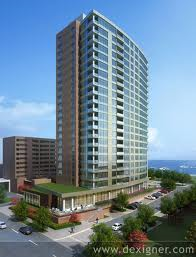
Imagine you’re sitting on your front porch rocker reading the newspaper on a quiet Saturday evening enjoying the beautiful sunset, when the excavators pull onto the adjacent field. Construction begins bright and early Monday morning. A little concerned, you wander over to find out what’s happening. To your amazement you find out that an 8 level office building is under construction. You will lose your view of the sunset and will probably have shade across your entire yard beginning about 2:00 every afternoon.
How do you respond? Perhaps you might think, “Great, just think of how much I’ll save on my power bill because I won’t have to run my air conditioner as much. Or more likely you’ll think, “This is crazy. I built here first. How do they think that they can come in here and steal the view, the sunlight and the solitude that I enjoy. I’m going to talk to somebody.”
Upon consultation with the city officials you find out that you live on the edge of a residential zone, which means that businesses and industrial facilities are not allowed. However, the building under construction is located on the edge of a commercial zone, and they are allowed to build buildings up to 8 stories. Further review shows that the city council changed the zoning of a large chunk of farm land (part of which is adjacent to your home) to commercial 2 years ago.
On the surfaces Zoning laws attempt to eliminate disputes between neighbors, but are often just control measures for overzealous city planners. Zoning laws create some extreme challenges for our local city councils. It seems that in so many cases no matter what they do they will be taking control of someone’s property unjustly. What did we do before zoning laws?
Before zoning laws were instituted nuisance ordinances protected neighbors from unreasonable actions by others. For example a nuisance ordinance could disallow loud music after 10:30 P.M., or smoke from a manufacturing factory blowing into a neighborhood. If there was a dispute between neighbors that one was being harmed by the other, then a judge could hear the evidence and make a decision.
Zoning laws started as early as 1885 when San Francisco made a law disallowing public laundries from most areas. This was an attempt to zone the Chinese out. The Supreme Court overturned this law in 1886. In 1915 NYC began zoning for building when the 538 foot Equitable Building was built. It cast a 7 acre shadow on surrounding properties.
In their current form zoning regulations have become so restrictive that they often limit many legal unoffensive activities that truly harm no one. They stipulate almost ridiculous things such as what type of house can be built in certain areas or what type or how many animals you can own. Often they create artificial supply and demand shortages for certain types of uses, which increases cost unnecessarily and often creates congested areas. If a council does change a zoning type, then everyone who had purchased land expecting a certain use may all of-a-sudden find neighbors using their land very differently like the theoretical situation presented earlier.
The recent situation in Honeyville that may restrict a Midwife from allowing women to come to her home for treatment seems a classic example of the overregulation. She lives in an agricultural zone. Wouldn’t that seem to indicate that there may be farming and cattle? Surely the cattle aren’t going to be bothered by a woman having a baby. If the traffic became so over burdensome, surely there are already traffic laws to correct that situation.
Perhaps zoning laws may be appropriate in the affirmative by allowing certain things that otherwise wouldn’t pass the nuisance ordinance muster, not by disallowing a host of things that really don’t affect anyone else anyway.
Could we live peacefully with no zoning laws? The city of Houston Texas has no zoning laws. If they can do it, surely the good people of Utah could too
The building that broke the camel's back was the 42-story Equitable Building. Built in 1915, the building's height and heft were unprecedented. As NYC Zoning tells it:
Rising without setbacks to its full height of 538 feet, the Equitable Building cast a seven-acre shadow over neighboring buildings, affecting their value and setting the stage for the nation’s first comprehensive zoning resolution.
The first city to experiment with this was San Francisco. In 1885, the city banned public laundries from most areas, a not-so-subtle attempt to zone the Chinese out. That law was invalidated by a 1886 Supreme Court case.
The story of American zoning is really the story of how Americans learned to legislate their NIMBY impulses.
Before zoning, cities mostly regulated what could be built through nuisance laws. If someone didn't like how their neighbor was using their property, they could haul them to trial and let a judge decide what to do about it.
But in 20th century New York, the process had already become cumbersome. In Manhattan, new building techniques were pushing building heights higher, costing neighborhoods sunlight and air. And factories and warehouses were encroaching on fashionable shopping districts, much to the chagrin of said fashionable shoppers.